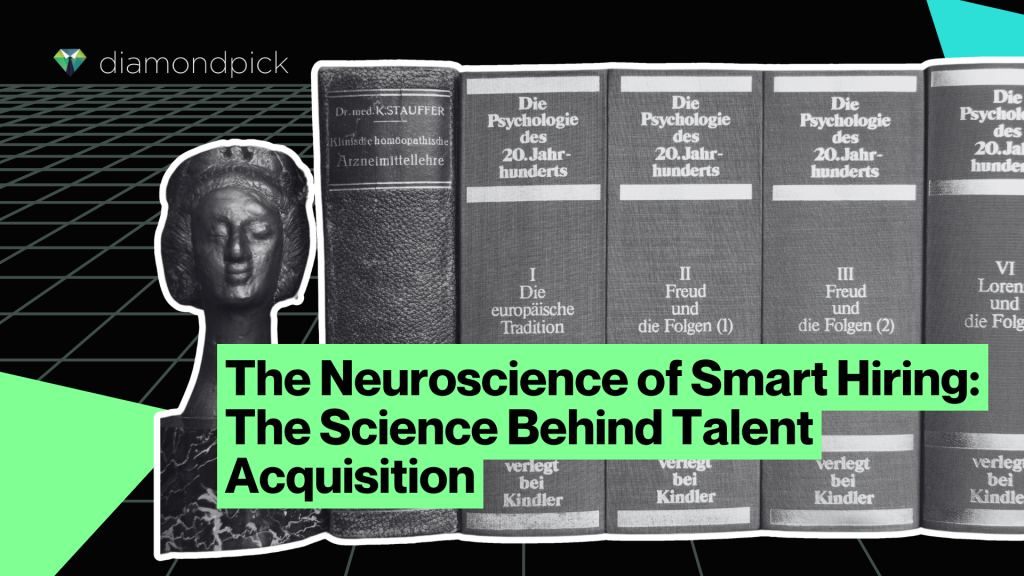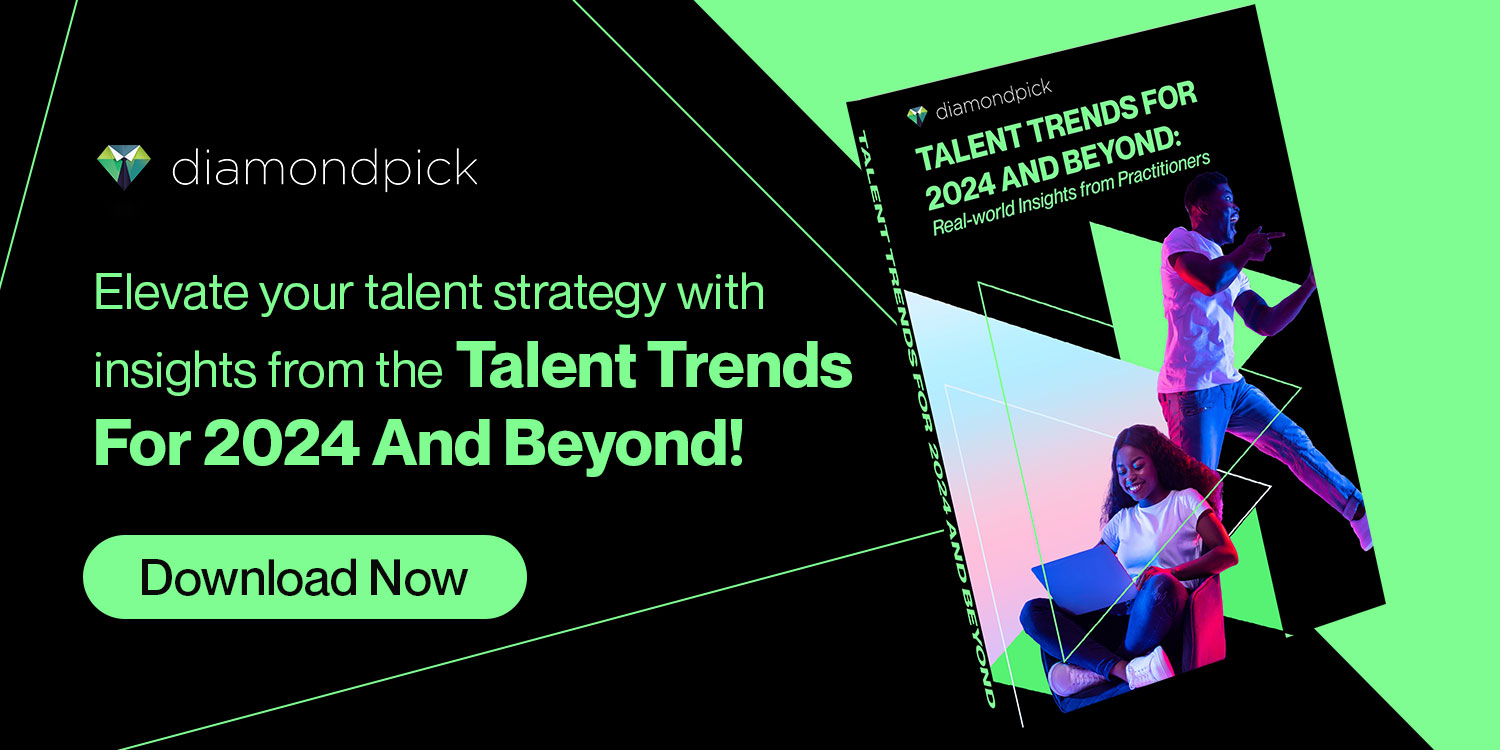
In a world where every decision counts, understanding the inner workings of the human mind is the key to unlocking success. Ground-breaking research in Neuroscience and AI is transforming the way organizations recruit, hire, and retain talent. Read this blog to decode the secrets of the brain and revolutionize your approach to hiring.
The Synergy of Brain Science and Talent Acquisition
Our decision-making power is only 0.26%, and our brain decides the remaining 99.74% before we even realize it.
Neuroscience, the study of the brain and its functions, has gained traction as organizations understand the importance of subconscious drivers in human decision-making. Harnessing insights into brain functioning, HR managers can elevate their strategies and craft more captivating HR experiences. This approach, rooted in an understanding of cognitive dynamics, paves the way for creating emotionally intelligent workplaces that not only engage employees but also contribute to enhanced talent strategies.
How Neuroscience and AI are Transforming Talent Acquisition
Neuroscience has significantly influenced the evolution of artificial intelligence, serving as a source of inspiration for creating AI systems with human-like characteristics. By mapping neuroscience-based logic to algorithms, AI models can learn quickly on very little data, just like our brains.
With breakthroughs coming faster than in any other field of science, it is now possible to use neuroscientific methods to further understand the nature of human decision-making. Advancements like emotion analytics, neurofeedback, psychometrics, mindful leadership, and more are reshaping the talent landscape. These advancements can help organizations cultivate deeply engaged and remarkably productive work environments.
- Progress in deep learning algorithms, along with the growing computational capabilities of computers, enables the efficient analysis of extensive datasets, giving rise to OpenAI tools like Chat GPT.
- By combining neuroscience and AI assessments, models can be created to identify talent accurately without bias.
- Advancements can also help analyze how people arrive at their decisions – in real-time, also revealing how people think and feel about their decisions.
- Deep learning models can decipher neuroimaging data and accurately predict decision-making, action selection, and behavior.
The collective capabilities of neuropsychology and AI engines can be leveraged to predict candidate fit with a high degree of accuracy. It can help assess candidates based on behavioral traits and technical skills, eliminate biases, personalize benchmarks, ensure that the candidate fits the organizational culture, and make a decision based on the historical recruitment decisions of the organization. All this can help mitigate the risk and cost associated with bad hires.
Neuroscience and Decision-Making
In the evolving landscape where technology and neuroscience intersect, we see increased opportunities to enhance lives by decoding the intricate maze of the human mind and how the brain influences complex thoughts and behaviors.
In today’s competitive landscape, we often face decisions under pressure, with limited information, or in the face of uncertainties. Effective decision-making is crucial to achieving business success. Gaining insights into neuroscience principles can offer a substantial advantage and provide a significant edge in making smarter, more effective decisions. There are two ways in which the brain helps with decision-making:
- Automatic decision-making is based on intuition and past experiences. It is effortless and rapid, allowing us to make quick decisions required for modern agile work cultures.
- Deliberate cognitive processing using conscious effort and mental energy. This is a slow and analytical mode of thinking designed for survival and efficiency.
Recruitment and hiring decisions usually rely on familiar tactics, patterns, and muscle memory of automatic decision-making. A blended approach, incorporating strategic pipeline building, is ideal for future-proofing companies and ensuring a steady talent pool for upcoming roles.
Great decisions result from the interplay between reason and intuition, shaped by two distinct thinking systems – automatic and deliberate cognitive processing.
Intersection of Neuroscience and Recruitment Strategy
The application of neuroscience to understanding human behavior extends to all areas of HR and recruitment, from elevating candidate experience to making hiring and selection decisions and interview assessments.
Most recruiters are trained to make quick decisions to fill up targeted roles quickly. Ideally, organizations should use a blended approach for strategic pipeline building to future-proof the organization and prepare for future roles with top talent.
- Structured Interviews: Neuroscience also helps with structured interviews at the final interview stage by observing candidates and how they interact with others.
- Enhanced Cognitive and Emotional Assessments: Advancements in neuroscience enable the development of more sophisticated assessment tools capable of evaluating cognitive abilities, emotional intelligence, and other essential personality traits required for various job roles.
- Equal Opportunity Assessments: Candidates are all given the same conditions for assessment and selection, resulting in increased workplace diversity.
Leveraging AI-powered gamified assessments backed by neuroscience allows employers to simulate work-related scenarios, enabling employers to gauge their real-life reactions and performance in specific situations.
Demonstration of the Neuroscience Application in the Hiring Process:
| Step 1: Minimize the impact of Emotional Thinking by prioritizing objective criteria and quantitative data for candidate evaluation. |
|---|
| Step 2: Incorporate structured interviews to mitigate unconscious biases using behavioral-based assessments unique to each candidate. |
| Step 3: Seek multiple perspectives to gain a comprehensive view of a candidate. |
The Future of Neuroscience in the Hiring Process
Researchers in neuroscience and artificial intelligence (AI) are co-creating models for better decision-making to better understand brain processes and build adaptive machines.
We are developing cutting-edge neuroimaging methods to understand the human brain at work in real-world scenarios and integrating them with Virtual Reality Simulators to create immersive workplace environments for measuring cognitive and emotional processes influencing candidate performance.
While it may not become standard hiring practice due to legal and ethical barriers, ongoing research explores human decision-making models. It will develop solutions like resume anonymization to mitigate biases in hiring. Advancements in neuroimaging technology suggest future research exploring neural predictors of performance within the hiring process.
Neuro-Driven Recruitment
- Enhanced Hiring Decisions: Leveraging neuroscience in the hiring process assists organizations in making more informed and effective hiring decisions. By incorporating insights from the field of neuroscience, employers can gain a deeper understanding of candidates, leading to improved selection outcomes.
- Algorithm Optimization: Neuroscience contributes to the development of more sophisticated algorithms for candidate analysis. By drawing on principles from the study of the brain and cognition, algorithms can be fine-tuned to consider nuanced factors, resulting in a more accurate evaluation of candidates’ suitability for specific roles.
- Assessing Cognitive Functions and Emotional Intelligence: Examining cognitive functions and emotional intelligence through the lens of neuroscience enables a more nuanced evaluation of candidates’ potential for innovation, leadership, and teamwork.
- Harnessing Predictive Analytics: Utilize neuroscientific data alongside machine learning algorithms to forecast candidate success in particular roles, enhancing the alignment between job prerequisites and applicants’ profiles.
- Engagement through Storytelling: use the neuroscience of storytelling to craft compelling narratives about the company’s mission, culture, and impact of its work. This method activates the brain’s empathy circuits, enhancing the organization’s attractiveness to prospective talent.
The integration of neuroscience in the hiring process not only refines decision-making but also plays a pivotal role in advancing the capabilities of analytical algorithms, ultimately benefiting organizations in their quest for top talent.

For more insights, strategies, and tools that will help organizations navigate the dynamic talent market read Diamondpick’s Talent Trends 2024 eBook. Download your copy today!
